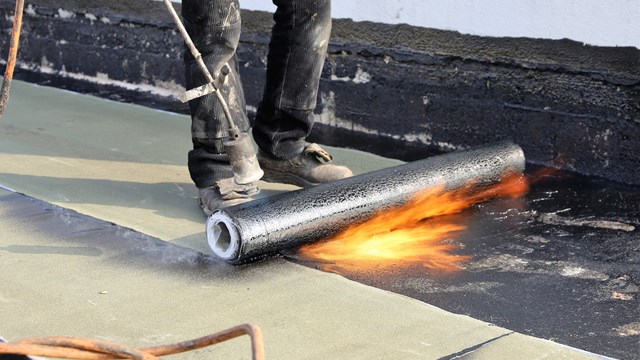
Living in a high-rise, condominium, or co-op certainly has its perks. You get the convenient location, the dramatic views, attentive concierge services and a range of amenities. Fast forward a few years and what was once the new kid on the block is now part of a streetscape that is within walking distance of up-and-coming competition. The ability to attract new residents, retain the existing ones, and maximize the long-term value of the asset will ensure your community’s longevity in an ever-competitive market. Knowing where to start with such a long-term strategy can be challenging; so to that end, we’ve put together some tips for your board-management team to consider as you map out an approach that best fits your community and its constituents.
Know Your Audience
Spending capital to improve an asset can only yield returns if it's targeted at the proper audience. The improvements must take into consideration the neighborhood, the existing occupants, and if you’re looking to entice new tenants, the value of the new contracts. A higher-paying tenant base requires the latest and greatest amenities and spaces - and these spaces must consider both the interior and exterior needs of the new design.
Create More Engagement
Any potential improvement is an opportunity to provide new spaces for the community. The lobby is the first space that sets the tone and atmosphere for the rest of the building. It’s more than just an area you walk through to get to your destination -- it can become the destination. With varied seating configurations, these areas can offer gathering spaces for everything from get-togethers to huddle spaces for more intimate discussions.
New Work-Life Integration
The global pandemic event has prompted a dynamic shift in how we interact and work. Given that reality, now may be the ideal time to offer amenities that cater to this new normal. Catering to the new work-life integration by offering remote workspaces, dedicated small conference rooms and providing the tech for the shareholder that a conventional office would have increases your building’s value.
Turn Overhead Into an Asset
Transforming transition spaces into destination spaces positions a building as a more attractive investment, both for existing occupants and certainly for new tenants looking to invest in locations that support a healthy work-life balance. Amenities such as Amazon Lockers, upgraded mail rooms, spaces that can cater to classes for art/crafts/technology, and the ever-growing maker-space environment attract tenants who are willing to pay a premium for these amenities.
Creating Value
Ultimately, the question is what type of value you’re looking to create with a given asset. Is it brand value, or fiscal value? Can it benefit both the building owner and the shareholders? We need to think holistically about lifestyle, amenities, and the atmosphere that is being created.
The Three R’s
The first step to any design approach is to understand what the goals are for the building’s residents, the building’s owner, and the property management team. Is it to increase the value of the asset? The ability to compete with newer properties in the area? To create a more updated look and feel, or to retain existing shareholders while attracting new ones? The answers to these questions can dictate the scope of renewal and have lasting effects on the shareholder, the building, and the surrounding community.
Refreshing
Refreshing your spaces through minor design movements is the lowest risk approach. This can be accomplished by various methods, such as painting the walls, changing the flooring material, updating or introducing new lighting, adding artwork and sculptural pieces to break up the space, and introducing signage and graphics to convey the atmosphere.
The addition of fixtures, furniture and equipment all combine to create a transformative experience that can offer a contemporary look and feel while maintaining the atmosphere of familiarity for the current residents. In today’s high-rise communities, amenities play a major role in the quality of life and add value to the community experience. Keeping these spaces updated allows the residents to maintain a high quality of life while providing value to the building. This in turn changes the perception of these spaces from simply being overhead expenses into valuable assets.
Repositioning
Repositioning is more ambitious, and is aimed at reintroducing the brand to the community, both internally and externally, by attracting new residents and retaining existing residents who might be looking into options to reinvest in newer, more updated properties. This type of targeted improvement can yield faster completion times when phased while minimizing the disruption to the building’s occupants.
This strategy introduces architectural elements like redesigned entrance canopies, added exterior elements such as lighting, and creating a greater brand identity presence through graphics. The ability to add elements to the building’s façade creates a greater street presence, and can also create an aesthetic influence within the greater urban environment.
Rebranding
Rebranding - often through a full façade renovation, for example - is the most ambitious transformation of an asset, and when applied intelligently can uncover its unrealized potential. Often, the building is already at a premier location and through a more aggressive overhaul, we breathe new life into a dated asset.
When to Make the Change
Knowing when to make the leap from ideation to realization is crucial to starting the process. Are there impending shareholder departures because the building is aging and doesn’t offer newer amenities within the neighborhood? Is there a low occupancy due to a dated look and feel? Is new competition in the area driving potential investors to these properties instead of yours?
Consulting with your property management team and leaning on their experience and expertise within the market is the key to understanding what the existing shareholders need and prospective shareholders want. Factoring in short term budget expenditures vs. long-term planning goals that can be incorporated into the reserve fund can help position the building to compete in this new market.






Comments
Leave a Comment